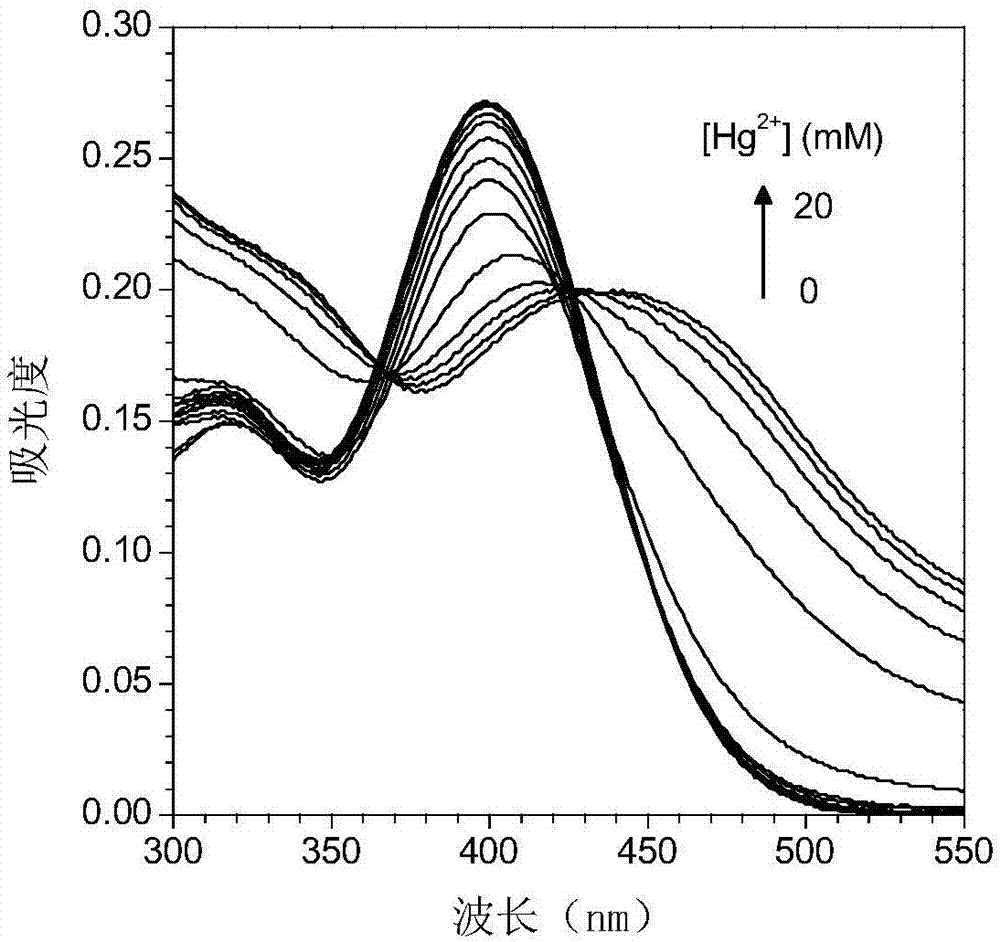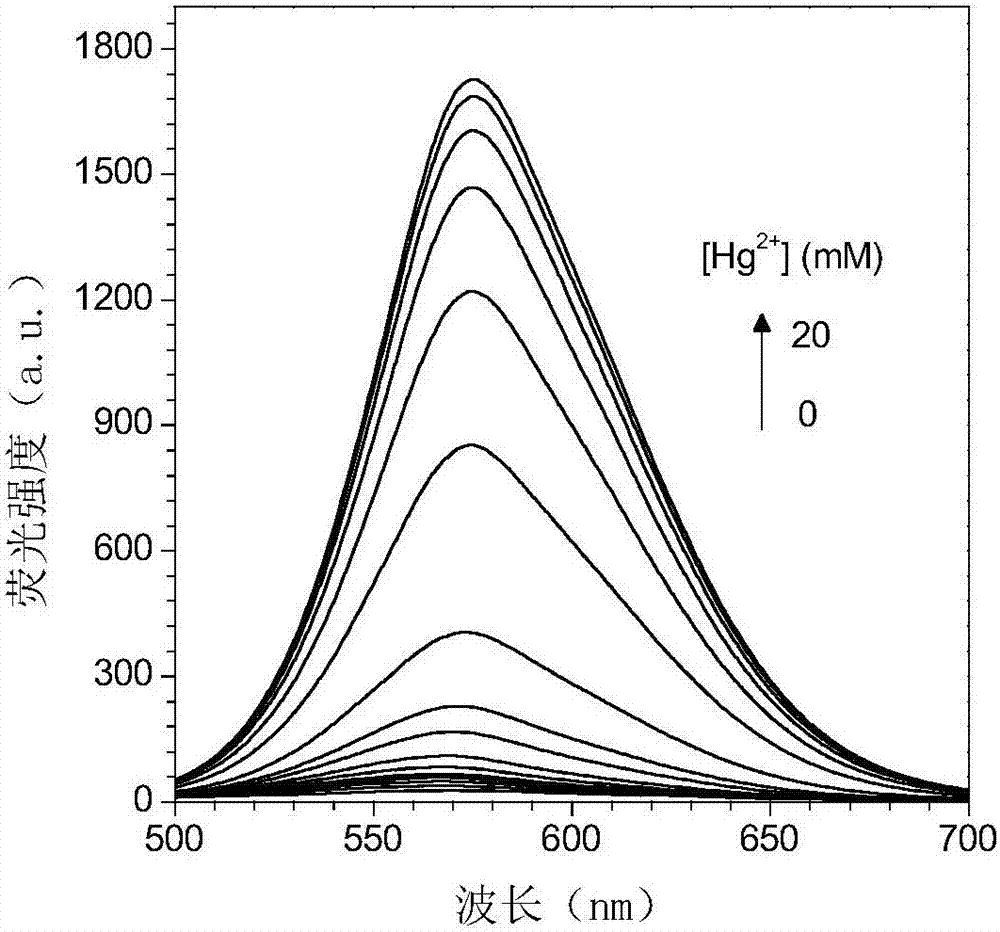Used to detect hg 2+ Aggregation-induced luminescent fluorescent sensor and its preparation method and application
A technology of aggregation-induced luminescence and fluorescence sensor, applied in chemical instruments and methods, luminescent materials, fluorescence/phosphorescence, etc. The effect of permeability
- Summary
- Abstract
- Description
- Claims
- Application Information
AI Technical Summary
Problems solved by technology
Method used
Image
Examples
Embodiment 1
[0033] Synthesis of Aggregation-Induced Luminescence Fluorescence Sensors
[0034] 1. Add 2g (5mmol) of 4-bromo-tetraphenylene into a Schlenk test tube, followed by 56mg (0.25mmol) of palladium acetate, 157mg (0.6mmol) of triphenylphosphine, 0.8mL (7.5mmol) of 4-vinyl Pyridine and 3 mL (21.5 mmol) of triethylamine were stirred at 100°C for 3 days under nitrogen protection, the reaction solution was cooled to room temperature, and a mixture of petroleum ether, dichloromethane and ethyl acetate in a volume ratio of 10:1:1 was used. Elution with the eluent gave the compound of formula 1 in 77% yield.
[0035] 2. Add 3g (24mmol) of 2-bromoethanol into a 100mL round-bottomed flask, add 30mL of dichloromethane to dissolve, then add 3.62g (24mmol) of tert-butyldimethylsilyl chloride, 2.45g (36mmol) of imidazole, room temperature After stirring for 21 hours, 20 mL of water was added to quench the reaction, dichloromethane was evaporated under reduced pressure, extracted with diethyl ...
Embodiment 2
[0040] The aggregation-induced luminescence type fluorescence sensor of the present invention detects Hg in the aqueous phase 2+ application, the specific method is as follows:
[0041] The aggregation-induced luminescence fluorescence sensor was added to a mixture of deionized water and dimethyl sulfoxide with a volume ratio of 8:2 to prepare a 10 μmol / L fluorescence sensor solution; gradually add 3 mL of 10 μmol / L fluorescence sensor solution Add mercuric chloride aqueous solution to detect Hg in the system 2+ The concentration of 0, 0.01, 0.05, 0.1, 0.3, 0.5, 1, 2, 4, 6, 8, 10, 12, 14, 16, 18, 20 mmol / L, record the change of ultraviolet absorption spectrum and fluorescence of the fluorescence sensor Emission spectrum changes, see figure 1 and figure 2 . Depend on figure 1 It can be seen that with Hg 2+ As the concentration increases, the UV absorption peak of the fluorescence sensor at 400 nm gradually decreases, and when Hg 2+ When the concentration is 20 mmol / L, a...
Embodiment 3
[0043] The aggregation-induced luminescence type fluorescent sensor of the present invention detects Hg in mitochondria 2+ application, the specific method is as follows:
[0044] The commercial mitochondrial dye Mito Tracker Green was co-stained with a 5 μmol / L fluorescent sensor solution and imaged using a confocal laser fluorescence microscope. image 3 The signal of the green channel comes from mitochondrial dye (excitation wavelength is 488nm, emission range is 459-530nm), Figure 4 The orange signal comes from the fluorescence sensor (excitation wavelength is 405nm, emission range is 530-630nm), Figure 5 Yes image 3 and Figure 4 the superposition of Figure 5 It can be clearly seen that the staining position of the fluorescent sensor on cells is almost exactly the same as the staining position of the mitochondrial dye, indicating that the fluorescent sensor of the present invention can specifically target mitochondria in cells.
PUM
 Login to View More
Login to View More Abstract
Description
Claims
Application Information
 Login to View More
Login to View More - R&D
- Intellectual Property
- Life Sciences
- Materials
- Tech Scout
- Unparalleled Data Quality
- Higher Quality Content
- 60% Fewer Hallucinations
Browse by: Latest US Patents, China's latest patents, Technical Efficacy Thesaurus, Application Domain, Technology Topic, Popular Technical Reports.
© 2025 PatSnap. All rights reserved.Legal|Privacy policy|Modern Slavery Act Transparency Statement|Sitemap|About US| Contact US: help@patsnap.com



